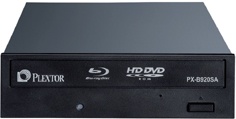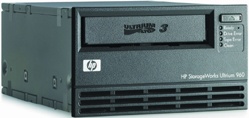There are many different types of storage media for all kinds of purposes. To make the backup process more manageable, ideally, the image archive should fit onto a single data carrier. With today’s typical high-resolution scans, a total capacity of 100 to 200 GB for the entire image archive is rather low. Among other media, there are no optical discs available yet in this capacity range, and tape drive offerings are rather sparse.
Optical media are cheap and easy to record, so they are ideal for removable storage. One problem is their relatively small storage capacity, at least for storing files from a film scanner. For example, a roll of 36 exposures scanned at 2900 dpi in 12-bit RAW format requires over 2 GB of storage space. A regular DVD with 4.7 GB capacity lets you store just two rolls of film at that resolution.
Regular tests in related magazines show that DVD recording technology has not yet fully matured. Current DVD burners show progress in burning speed; but with respect to data security, many burners and blank disks are not worth recommending. They are not suitable for reliably archiving your images. DVDs are more useful for data exchange, since they are inexpensive and almost all current computers can read them. They are also good for mailing.
There are no reliable findings on the long-term stability of recordable CDs or DVDs. For backup, they are neither safe enough nor do they have high enough capacity. The same is true of the newer Blu-ray technology. The medium’s capacity of 50 GB per disk is significantly greater than that a DVD, but it is still not sufficient for storing complete archives of high-resolution scan files.
Because of their enormous storage capacities of 100, 200, 400, and 800 GB, LTO tapes are seemingly good candidates for maintaining large image archives. Unfortunately, the costs for such systems are enormous, too: Good drives start at around $1,200 and tapes are around $40 each, which is not exactly a bargain. Besides the cost of the drive, you have to invest in a fast computer, too.
LTO drives are designed for professional purposes, which means they are generally designed to run on a performance server. If you use a standard PC instead, this can lead to malfunction, as the drive will try to write the data faster than the system can deliver.


